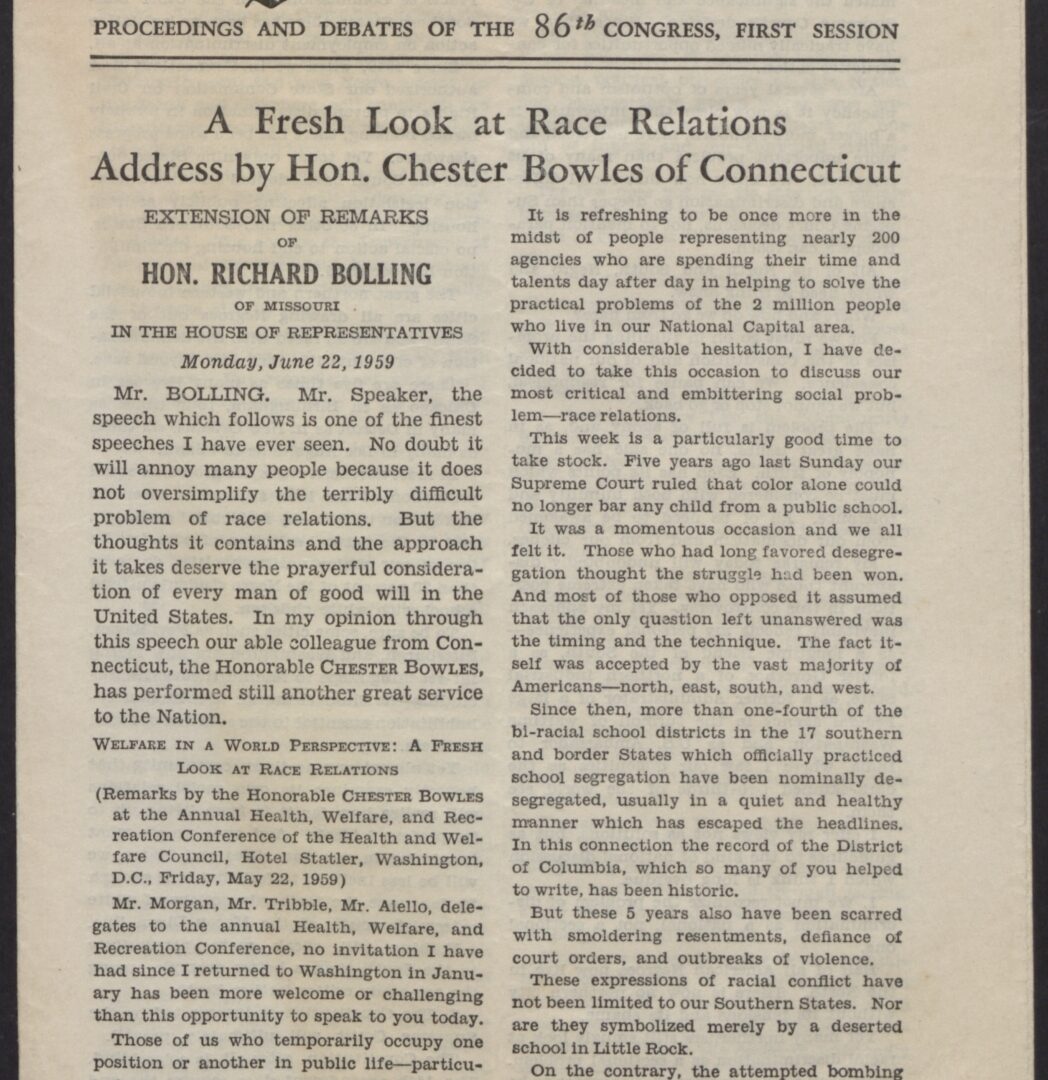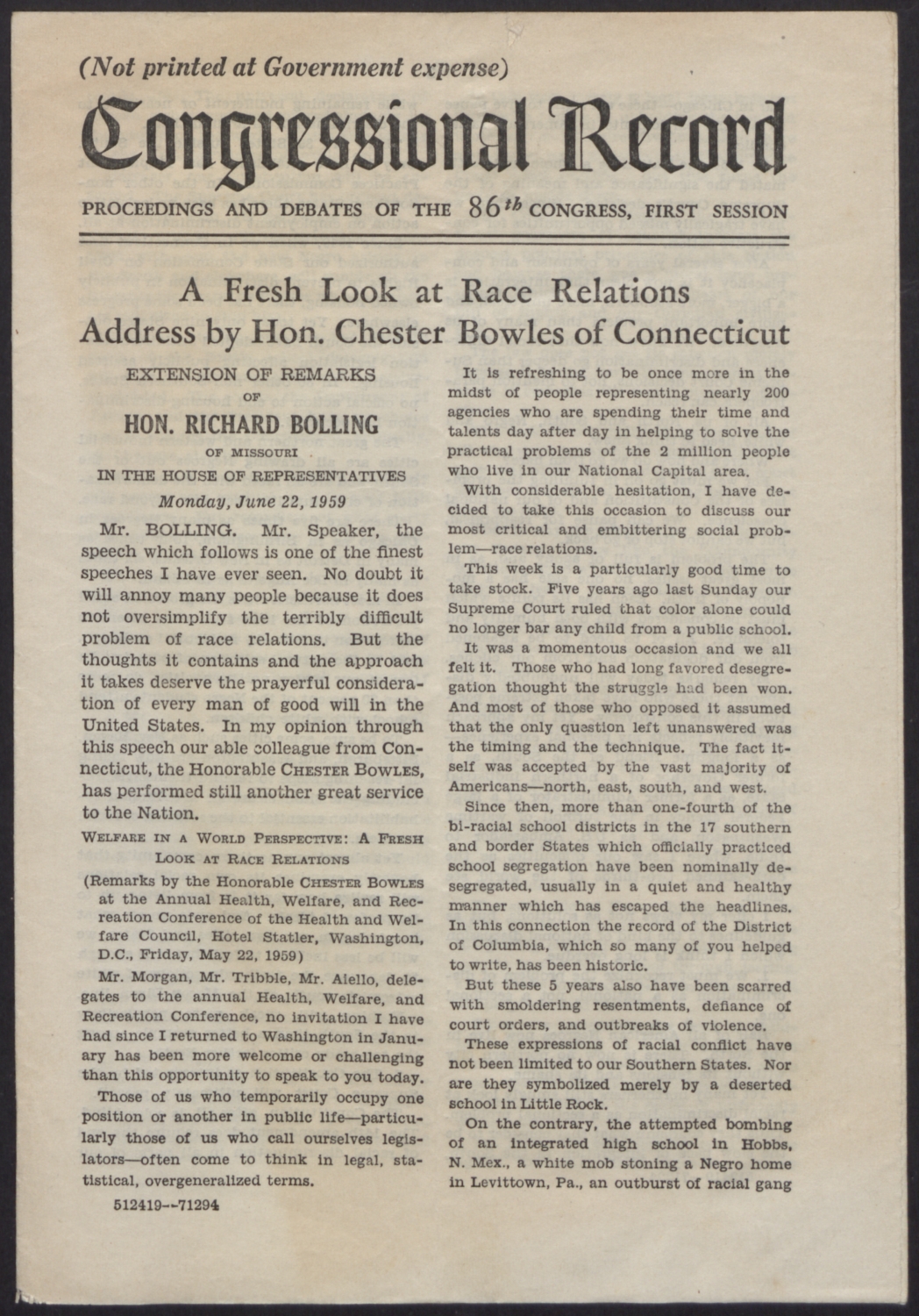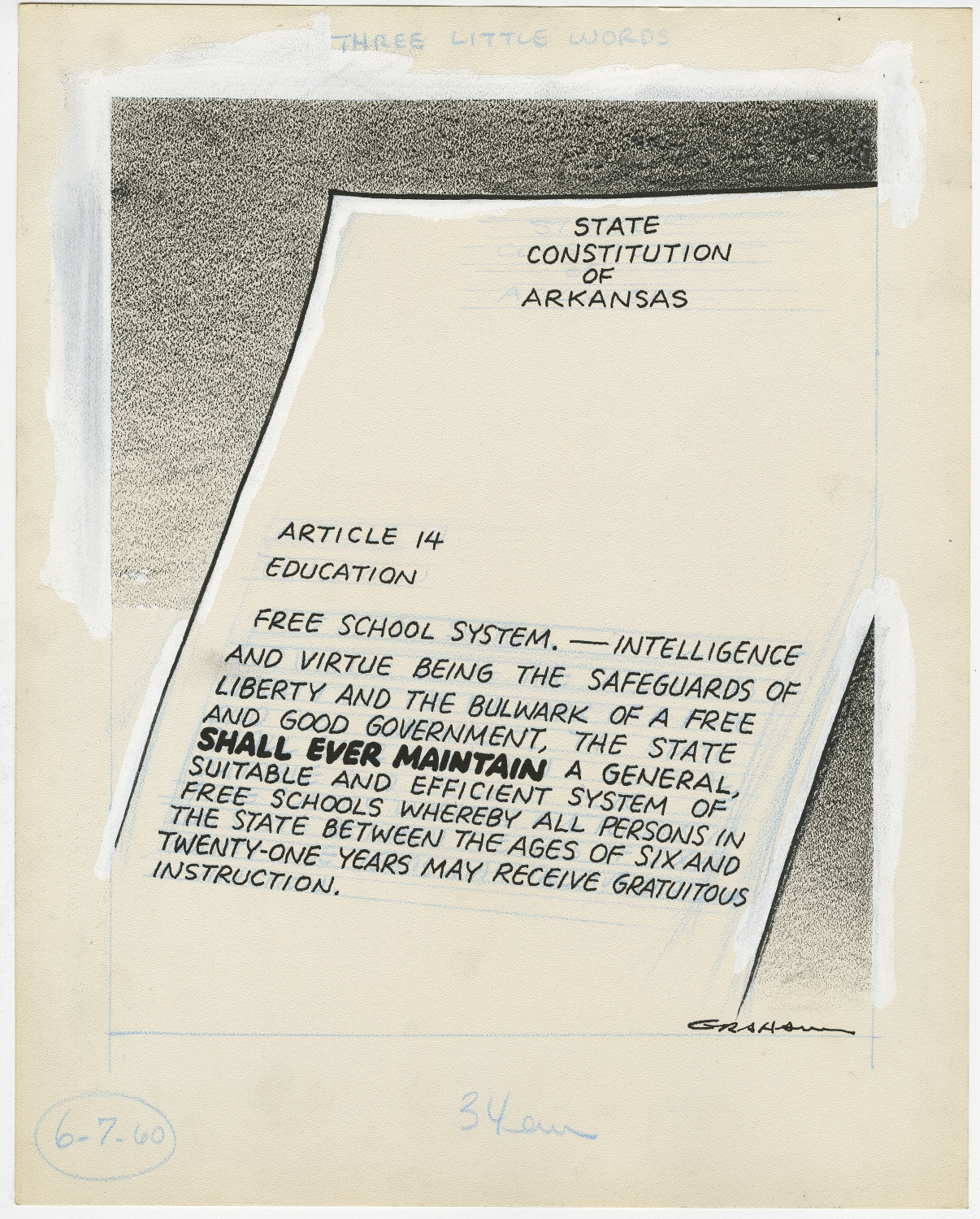Introduction
In 1954, nearly a century after the formal abolition of slavery in the United States, Brown v. Board of Education of Topeka, one of the most important Supreme Court decisions in US history, declared that segregation in public schools was unconstitutional. The decision partially overturned Plessy v. Ferguson, which in 1896 established the “separate but equal” doctrine. Under the doctrine, segregated facilities for black and white Americans were legal if they offered services of the same or comparable quality. In reality, Plessy v. Ferguson confirmed the long-standing practice of discrimination against black Americans. It argued that while the US Constitution protected equal political and civil rights for black and white Americans, it did not ensure equal “social rights.”
Organized efforts to overturn Plessy v. Ferguson began already in the early 20th century. Civil rights activists and lawyers fought to dismantle the legal system of segregation in the United States step by step. In 1951, Oliver Brown, a black father from Kansas, joined that legal struggle. Brown wanted to enroll his daughter in a white public school that was closest to their home in Topeka, Kansas. When the school refused to enroll Brown’s daughter and Brown lost his case in lower courts, he and other local black families, who joined the case, filed a class-action lawsuit in US federal court against the Topeka Board of Education. The plaintiffs argued that Topeka’s racial segregation violated the Constitution’s Equal Protection Clause because the city’s black and white schools were never equal. When Brown v. Board of Education of Topeka was heard before the Supreme Court, it was one of five cases filed to fight segregation in public schools. The name of the case became the name of the five combined cases. In a unanimous decision (9-0), the Supreme Court agreed that the racial segregation of children in public schools violated the Equal Protection Clause of the Fourteenth Amendment.
The Supreme Court decision was a momentous victory for civil rights activists and all black Americans. Simultaneously, many white Americans, particularly in the South, were outraged and ready to block integration efforts. The battle for equal and just access to education was far from over. It was now also additionally complicated by the Supreme Court’s choice not to provide any specific guidelines on when and how desegregation of public education should take place. In this activity, you will examine a speech, in which a white man reflects on the state of racial relations five years after Brown v. Board of Education.
Activity Questions
“A Fresh Look at Race Relations. Address by Hon. Charles Bowles of Connecticut,” June 22, 1959, page 1
- How does Bowles characterize the period of five years since Brown v. Board of Education? Did the 1954 Supreme Court decision end segregation and racial prejudice in the United States?
- Bowles offers seven points, in which he identifies problems and proposes solutions to the question of what he calls “race relations” in the United States. What are they? Summarize each point in 2-3 sentences.
- Who is Mahatma Gandhi, whose life Bowles discusses at the end of his speech? Research who he was. In what ways did Gandhi inspire some American civil rights leaders?
- Why according to Bowles Gandhi’s activism could serve as a good example to follow for Americans?
- Bowles was a white politician, diplomat, and public servant. How do you think his own point of view affected his understanding of racism in the United States?
- Many white Americans considered Bowles to be too radical. As Governor of Connecticut, he introduced policies that aimed to end racial segregation. He also supported civil rights causes. In 1951, after serving only one term, he lost his gubernatorial re-election bid to a conservative opponent who attacked Bowles’ record of supporting civil rights. At the same time, many black Americans considered Bowles’ approach to how Americans should address the issues of racism to be too moderate. In this speech, Bowles himself emphasizes that he advocates “moderate” solutions. Why do you think Bowles promoted what he called a “moderate” approach? And why do you think so many black and white Americans had opposite opinions about him and his ideas?
- How does Bowles’ speech connect to the history of Arkansas? Do you recognize any issues that Bowles discusses as relevant to the history of civil rights in Arkansas?
- Examine this cartoon. What does it depict?
- Have you ever seen cartoons in newspapers, magazines, or online? How is this cartoon different from typical cartoons?
- What kind of message do you think the author wanted to send through this cartoon?
- When was this cartoon created? Check again three other dates: when the Supreme Court issued the Brown v. Board of Education decision; when the Little Rock Crisis began; and when the letter you just read was written. What do all these dates tell you about civil rights struggles in Arkansas?
Primary Sources
To learn more about the primary sources featured in the activities above, click the following links:
Arkansas Social Studies Standards
US History Since 1890, Grades 9 – 12
- Strand: Era 9: Post-war United States 1945 to Early 1970s
- Content Standard 5: Students will analyze social, economic, and political changes in the United States between 1945 and 1970.
- Era9.6.USH.1 Analyze the roles of individuals, groups, and the government in securing civil rights during the mid-20th century using a variety of primary and secondary sources (e.g., minorities, women, NAACP, federal court cases, legislation, Twenty-fourth Amendment)
- Era9.6.USH.4 Examine domestic policies of the federal government between 1945 and 1970 and the outcomes from multiple perspectives (e.g., New Frontier, Great Society, civil rights, social issues)
- Era9.6.USH.5 Construct historical arguments of long-term effects of social and economic changes occurring during the mid-20th century using available data and multiple sources
African American History, Grades 9 – 12
- Strand: Illusion of Equality 1950-1970
- Content Standard 6: Students will analyze the African American experience from 1950-1970.
- IE.6.AAH.1 Analyze the various influences of African Americans on political change during the mid-1900s using primary and secondary sources (e.g., feminism, civil rights organizations, political organizations, and labor unions, military)
- IE.6.AAH.2 Examine the various influences of African Americans on social change using primary and secondary sources from multiple perspectives (e.g., migration, feminism, military, social organizations)
- IE.6.AAH.3 Examine various ways African Americans participated in the Civil Rights Movement and the effects of their actions using a variety of primary and secondary sources (e.g., sit-ins, boycotts, marches, speeches, music, methodologies, organizations)
- IE.6.AAH.4 Analyze the effects of legislative developments on the African American experience between 1950-1970 (e.g., voting, civil rights, fair housing, education, employment, affirmative action)
Key Terms
More Information
- https://www.uscourts.gov/educational-resources/educational-activities/history-brown-v-board-education-re-enactment
- https://www.naacpldf.org/case-issue/landmark-brown-v-board-education/
- https://www.thirteen.org/wnet/supremecourt/rights/landmark_brown.html
- https://www.thirteen.org/wnet/supremecourt/antebellum/landmark_plessy.html
Downloadable Guides and Handouts
We encourage K-12 educators to use History Alive: Virtually! in a way that will best match their classroom needs. The “Exercise” handout includes a complete exercise as featured on this website, the “Primary Sources” handout includes only primary sources used in the exercise, and the “Questions” handout includes analytical questions from the exercise but is editable and can be easily changed to best match students’ needs.
“A Fresh Look at Race Relations” – Exercises



